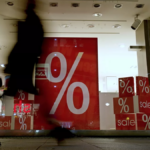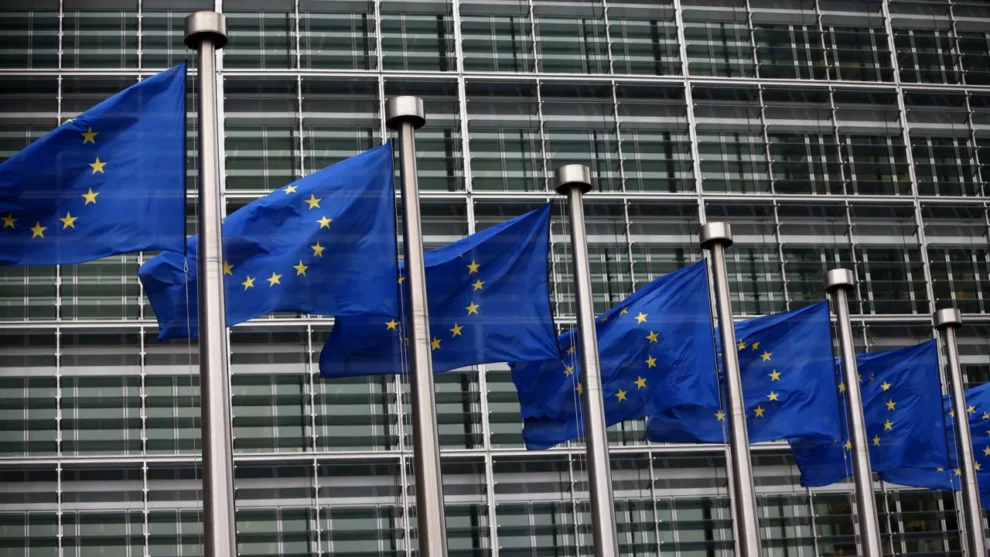Slow consumer spending and sticky inflation have led to two consecutive quarters of economic contraction in the European Union. That means that the eurozone fell into a recession over the winter months, and growth this year is likely to be weak.
Economists say that the recession is mild and the broader European economy has managed to avoid a serious downturn — but they’re also focused on the spillover effects onto the United States and the global economy.
If Europe sneezes, the economists ask, is it possible that the United States catches a cold?
The answer, said Federal Reserve Bank of New York economists Ozge Akinci and Paolo Pesenti, is more like “when Europe catches a cold the rest of the world sneezes.”
What’s happening: The 20 countries that use the euro fell into a mild recession around the turn of the year, as high inflation discouraged consumer spending and governments tightened their purse strings, according to a recent revision of data. That means both the eurozone and the whole of the EU are now lagging the US economy.
In the first three months of the year, economic output in the eurozone dropped 0.1% compared with the previous quarter, following a decline of the same magnitude in the final quarter of 2022.
GDP across the Atlantic, meanwhile, rose 0.3% in the first quarter after an increase of 0.6% in the fourth quarter last year, according to data from the Organisation for Economic Co-operation and Development.
But things may not stay that way for long.
Akinci and Pesenti recently examined whether economic crises in Europe have affected the United States over the past thirty years. The answer, they reported, is a “(moderate) yes.”
European developments, they found, can affect the United States in a number of ways: There are trade linkages, as US residents use goods and services imported from Europe, and produce goods and services exported abroad. Cross-border financial flows, when US banks and businesses lend to and borrow from Europeans and European financial institutions, can also be interrupted. Exchange rates also influence US inflation and global confidence shocks can have a knock on effect.
Concerns about fiscal health in Europe, especially in Greece, led to a credit crunch across the continent. That concerned the US Federal Reserve. In the minutes from the Fed’s September 2012 meeting, they spoke about their fear of contagion.
Policymakers “noted that a high level of uncertainty regarding the European fiscal and banking crisis and the outlook for US fiscal and regulatory policies was weighing on confidence, thereby restraining household and business spending,” the notes said.
“Prominent among these risks were a possible intensification of strains in the euro zone, with potential spillovers to US financial markets and institutions and thus to the broader US economy.”
What comes next: Europe is nowhere near a crisis on that scale. But we’ll get more insight into how the Fed is thinking about the current European downturn on Wednesday when the US central bank releases its latest policy decision and economic projections.
We’ll also likely hear more about the possibility of contagion when US Treasury Secretary Janet Yellen travels to France next week to participate in a summit, organized by French President Emmanuel Macron, to address a number of issues including development banks and global debt.
‘Bumps and pain’ coming for the US economy, says Goldman Sachs CEO
The US economy has been surprisingly resilient this year, but painful bumps are likely coming, said Goldman Sachs CEO David Solomon in an interview with CNBC on Monday morning.
“I think we’re at an uncertain moment,” said Solomon of the current economic outlook. “I think it’s a period to be a little bit cautious.”
Solomon forecast that the US economy could find itself in an environment “that might not be a recession, but it certainly would feel like a recession.” That would mean avoiding a hard landing but still muddling through “sluggish growth and sticky inflation,” he said.
The latest jobs report showed that payrolls have increased by almost double the average monthly gain in the 10 years before the pandemic, while the Federal Reserve’s preferred inflation gauge bounced higher in April. Spending also remains strong.
Strong employment and higher wages can mean higher inflation as companies pass on increased labor costs by raising the price of goods.
Solomon said on Monday that while he doesn’t expect Fed policymakers to raise interest rates to fight inflation at their meeting later this week, he does think that strong economic indicators and stubborn inflation could mean more hikes in the future. Those hikes, he said, will “probably make the economic environment a little bit more challenging.”
If the United States does fall into recession, he added, it likely wouldn’t happen until the end of this year or the beginning of 2024.
Americans haven’t been this optimistic about inflation in two years
Annual inflation is expected to continue its slow-but-steady deceleration in May, according to the latest Consumer Price Index released Wednesday.
Economists forecast that the CPI, a key inflation gauge that measures price changes for a basket of goods and services, will increase by 4.1% for the year ending in May. That would represent a sharp pullback from April’s 4.9% and would be the 11th consecutive month that inflation, as measured by the CPI, has slowed.
It’s been a two-year run of elevated prices, but investors and consumers alike appear to believe that the end is nigh.
Consumers’ near-term inflation expectations fell in May to their lowest level in two years, according to new survey data released Monday by the Federal Reserve Bank of New York.
Why it matters: The Federal Reserve closely watches both these expectations, as they can be a self-fulfilling prophecy, reports my colleague Alicia Wallace. If consumers anticipate that prices will remain high, they might spend more now and push for higher wages, and businesses might raise prices to accommodate higher demand and labor costs.
Source: CNN

















Add Comment